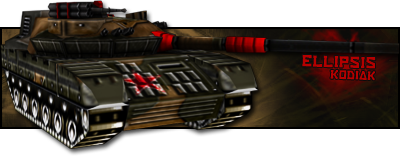
Dauth's little corner of Science
#26
Posted 02 December 2007 - 13:19
#27
Posted 02 December 2007 - 13:26

#28
Posted 02 December 2007 - 13:47
Firstly it has to be mentioned that Red Dwarf made a joke about SHC.
Now to business, the only theory I know of is called the wick effect.
Essentially the fire starts (be it by a spark or external source, death is usually fairly quick) and the fat in the human body melts but the clothes keep the fat in the rough cylindrical shape of a human, the fire spreads down the body burning like a candle, slowly and evaporating the fuel before burning it, the clothes act as a wick.
The process can only continue where there is sufficient fuel and clothing and thus peoples lower legs (regulalry without fat) tend to survive. The heat can infact shrink a human skull considerably. Leaving very strange remains.
The theory was tested on a pig (humanely killed), it was wrapped in thick clothing (jackets etc) and lit, the process detailed above was followed very closely. temperatures reaching evry high, but with the lack of motion and no other fuel around nothing else caught, with the wick effect it is possible to have scorch marks from the heat but no other damage since the fuel is evaporated before burning.
Hope this is what you were after.
#29
Posted 02 December 2007 - 13:52
Intelligent guy---> Dauth,
Ellipsis
Edited by Ellipsis, 02 December 2007 - 13:54.

Thanks for the sig and avatar, 'Dr.
#30
Posted 02 December 2007 - 14:08
Edited by Warbz, 02 December 2007 - 14:08.

#31
Posted 02 December 2007 - 14:10
#32
Posted 02 December 2007 - 20:31
 Talus, on 20 Nov 2007, 23:04, said:
Talus, on 20 Nov 2007, 23:04, said:
Or ... if you can get any liquid Nitrogen and some YBCO then i can tell you how to levitate stuff
And if you have a desire to kill yourself i can tel you how to make a cathode ray (electron beam) out of a disposable camera.
If you like any of these ideas then i'll explain them more.
I'm for elaboration on all of theses.
I love science stuff like in this thread, and will be watching it closely.
Have you ever done any fun stuff with thermite? (Which is terrible easy to make)
#33
Posted 05 December 2007 - 19:17
I have no idea how this could work, and that's my question. Is that possible?

#34
Posted 05 December 2007 - 20:52
here is another one...
I have been told that there are no solid theories as to how birds are able to fly as it seems the flapping of the wings would not create enough upthrust to counter their weight under the force of gravity.

#35
Posted 05 December 2007 - 21:29
Its called the Triple point, where a substance exists in all 3 basic states for water this is at temperature 273.16 Kelvin (or 0.01Celcius) and at a pressure 0.006 Atmospheres.
At the triple point you can have Ice Cubes sitting in Boiling Water in equilibrium with Steam, Now if you were to drop the temperature the equilibirum would be broken and then the water would freeze almost instantly, you could also play around with the pressure and achive the same result, I hope this explains it for you.
The diagram shows the change of state of a simple material the triple point is shown close to the centre, beyond these lines various other effects take place and are dependent on the material, water has some odd properties as it freezes.

Warbz, this is famous from a 'back of the envelope' calculation 'proving' bumblebees cannot fly, that is because the simple model used could not take into account vortex forces and a number of other effects. I haven't stuided fluids in any depth so am unable to go into details, it is plainly obvious that birds can fly and that the models were wrong.
I assure you we can compute the relevent equations about the flight of birds as similar knowledge must be used both in racing cars and planes of all sorts. No company or government would be silly enough to fail to develope a working model, especially with the budget to make planes these days.
While theories may compete this will be at the tiniest fractions of a percent level, and should not be accused of not having a proper theory.
Thank you to both gents for these pearls of science, please continue to contribute.
#36
Posted 05 December 2007 - 21:31
 Shirou, on 5 Dec 2007, 19:17, said:
Shirou, on 5 Dec 2007, 19:17, said:
I have no idea how this could work, and that's my question. Is that possible?
Sorta. The state of matter depends on how much energy an atom has, and how much room the atom has to move, and how that specific atom will react to those two things.
Take a group of H2O molecules at room temperature and at sea level pressure will liquid.
Reduce the temperature, keep at the same pressure: Turns to ice. (Most substances will shrink in size from having less energy, because they vibrate less and less, but H2O is quite special in that the molecules will arrange themselves in a pattern [due to polarity?] and so the whole of them actually expands to be slightly bigger than they were as water.)
Increase temperature, keep at the same pressure: Boils and turns into a gas
Keep temperature the same, and increase pressure: Turns to ice
Keep temperature the same and lower pressure: Boils and turns to gas. This is because the molecules can move around more with the same energy level.
Lower temperature, decrease pressure: I would assume it would stay the same.
Increase temperature and increase pressure a lot: Would cause it to "freeze" because it would have no room to move.
Did you also that you cannot bring water below 0 Celsius? It has to turn to ice before it can become colder. Same in that you cannot make water hotter than 100 Celsius until it turns to a gas (steam). Pressure cookers increase the boiling point of water, so you make the water achieve temperature higher than 100.
#37
Posted 05 December 2007 - 21:36
thanks for that dauth and nonetheless, chesterM
Edited by Warbz, 05 December 2007 - 21:37.

#38
Posted 09 December 2007 - 09:17

#39
Posted 09 December 2007 - 10:41
I'll go get one now

#40
Posted 09 December 2007 - 14:50
 Dauth, on 29 Oct 2007, 23:27, said:
Dauth, on 29 Oct 2007, 23:27, said:
I'm well versed in Maths and Physics, with a reasonable knowledge of Chemistry but I can only really expand on biology using logic and physics.
Can't believe I haven't stumbled upon this thread before. You seem like an older version of me - I'm doing physics, maths, further maths and chemistry at AS right now and plan to go on to do physics at uni.
#41
Posted 09 December 2007 - 19:08
#42
Posted 12 December 2007 - 15:11
I wish I'd done it at college because It would have made my first two years at uni sooo much easier, at degree level, physics is just maths with units, but you've gotta know the maths, and all the little trig tircks.
@Lambda
In theory a magnetic ship would be possible, however given the weak nature of the earth's magnetic field in most likelyhood the magnets required to lift a ship would be so oppoed to each other they they would tear the ship apart.
Maglev works by using sets of electromagnets changing polarity very quickly and shunting the train along, if the process the done fast enough air resitance and energy loss through heat are the main barriers to top speed.
#43
Posted 14 December 2007 - 16:38
 Dauth, on 12 Dec 2007, 15:11, said:
Dauth, on 12 Dec 2007, 15:11, said:
I wish I'd done it at college because It would have made my first two years at uni sooo much easier, at degree level, physics is just maths with units, but you've gotta know the maths, and all the little trig tircks.
Thanks for the advice mate. If I'm dropping a subject, I reckon it'd be chemistry (although I'm really enjoying all of them!).
Which course are you taking in physics? And how are you finding it?
#44
Posted 14 December 2007 - 18:00
#45
Posted 14 December 2007 - 19:29

#46
Posted 14 December 2007 - 19:39
Firstly i don't condone incendary devices, however from an academic point of view an efficient one, petrol + soap, if you want it self oxidising try adding potassium manganate VII, that should help it burn underwater. As for the real napalm I think it may be classified, failing that google will help you.
#47
Posted 14 December 2007 - 20:57
#48
Posted 14 December 2007 - 21:48
 Warbz, on 14 Dec 2007, 20:29, said:
Warbz, on 14 Dec 2007, 20:29, said:
That's not physics mate, it's chemistry
Military-grade napalm is make out of any liquid fuel, polystyrene (the white stuff they use to protect packaged things) and benzene, which you will never get hold of (nor should you, because it is carcinogenic and very toxic, as well as extremely flammable). You would probably need to light it with magnesium ribbon or something. Simpler napalms are made out of aluminum soap powder or flakes and gasoline. The original was made from napthenic and palmitic acid (similar to candle wax), dissolved by naphtha, hence the name napalm.
On a side note: I'm assuming you want to know this simply out of curiosity. If you're actually thinking of making it, walk away from this subject now and never think of it again.
Edited by Chyros, 14 December 2007 - 22:03.
The brave hide behind technology. The stupid hide from it. The clever have technology, and hide it.
—The Book of Cataclysm


#49
Posted 15 December 2007 - 11:12
#50
Posted 02 January 2008 - 05:44
1 user(s) are reading this topic
0 members, 1 guests, 0 anonymous users


 This topic is locked
This topic is locked
